Mirrors and Blindspots
Mirrors and Blindspots
Effective observation is an essential safety skill that’s required for driving.
It’s a skill that you’ll develop while learning to drive and is essential for passing the driving test. Your car mirrors make up an important part of observation.
Here we explain how to correctly set up your mirrors and how to use them.
We also cover other important observation skills to learn such as the car’s blind spot.
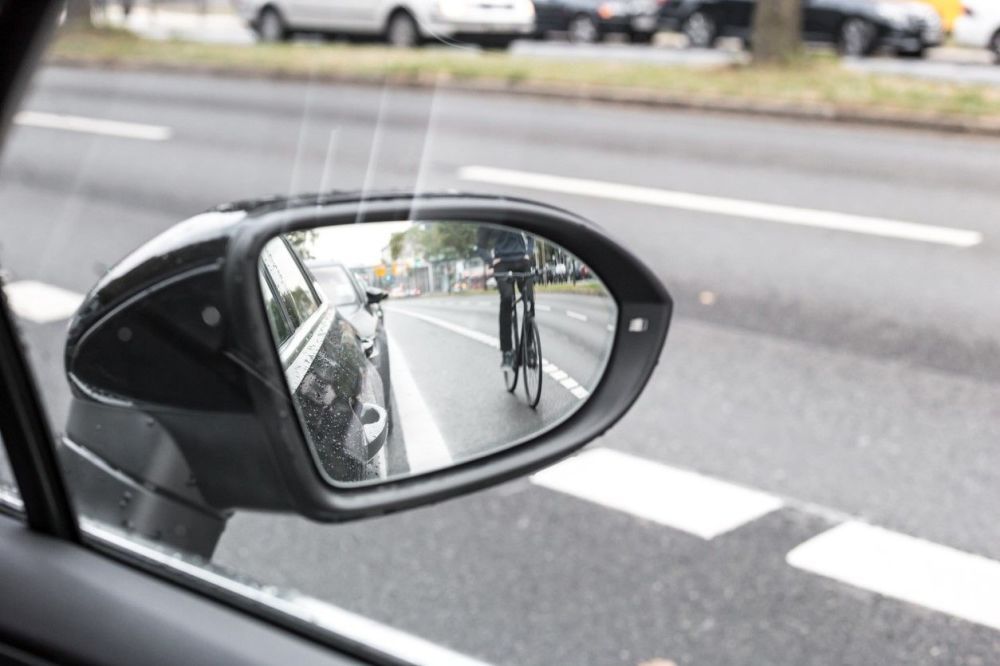
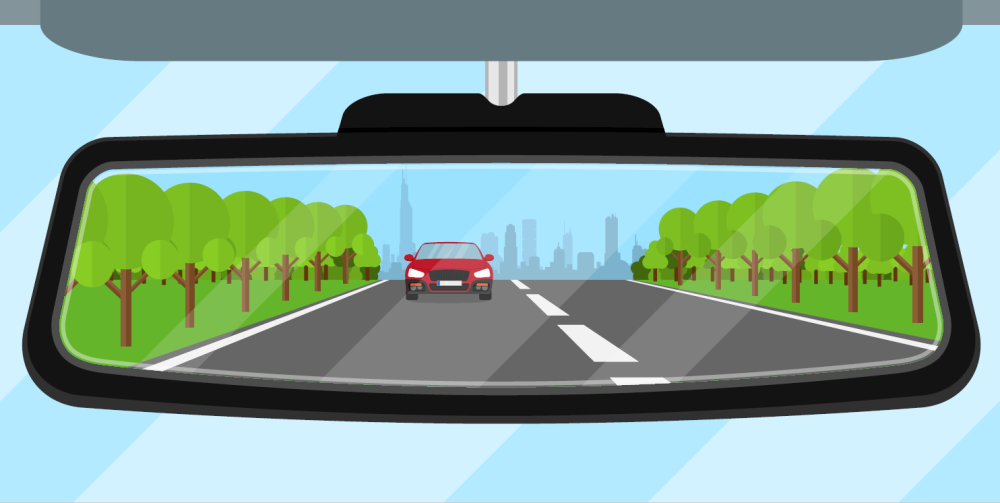
The difference in Mirrors
Also known as the rear view mirror, This is mirror is made with flat glass which gives a true picture of anything behind you. The image reflected in such mirrors isn't distorted, which makes it easier to judge the speed and distance of following traffic.
Most car mirrors have an anti-dazzle lever. This is for use at night so that you are not blinded by the glare of headlights from vehicles behind.
As with all car mirrors, only adjust the interior mirror when the car is stationary and you are seated in your normal driving position. Hold the mirror at the edges to avoid finger marks. Adjust the mirror so that you get the best possible view through the back window without having to move your head. You should be able to frame the whole of the rear window in the interior mirror, but, if you can't, make sure you can see the top right-hand side of the rear window.
Side Mirrors
These are convex mirrors, which are made using curved glass. Convex mirrors give a wider field of vision, however, they make judging the speed and position of following traffic more difficult. Vehicles will appear smaller and further away than they actually are.
Adjust the exterior mirrors so that you can get the best view to the sides with minimal head movements.
You should be able to see the edge side of the car, and often the front door handle should be in the left corner on the drivers side and the right corner of the mirror on the passengers side.
This way you can see anything that is overtaking you - you will not see them in the centre mirror
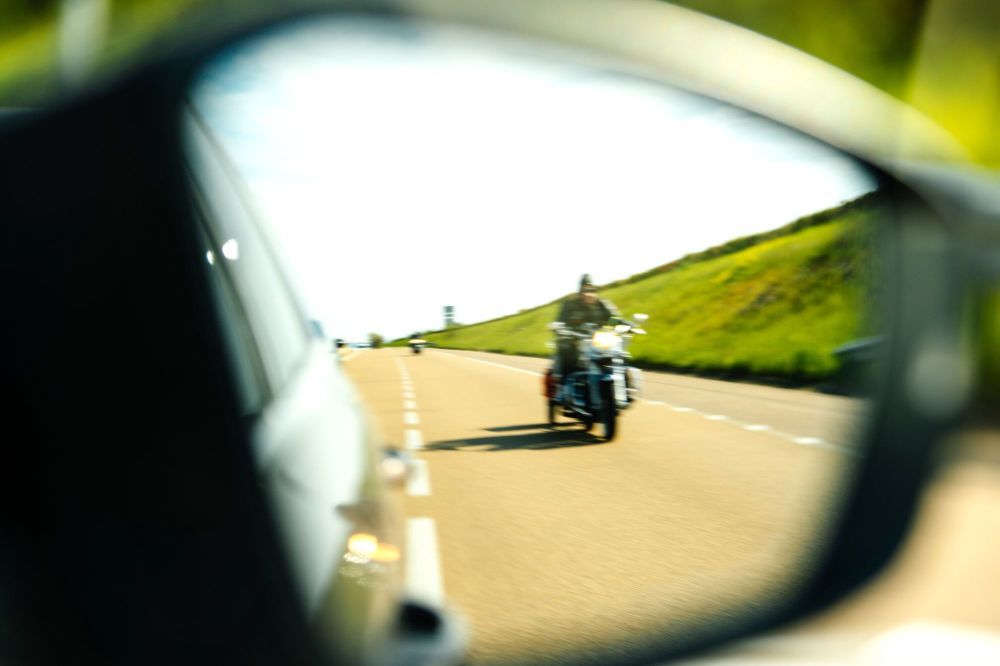
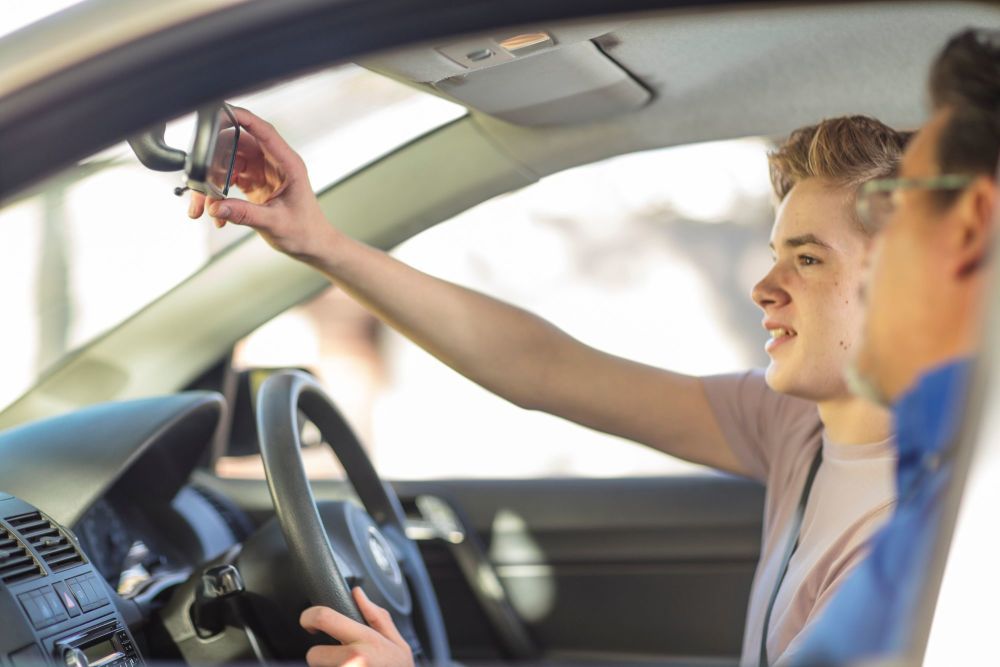
Using Your Mirrors
Using Your Mirrors
Regular use of your mirrors is an essential part of safe driving. You need to be aware of what is happening around you at all times.
When using your mirrors you should be asking yourself what's behind you, how near they are to you, what speed they are travelling at and what their intentions are. You must have enough time to decide, which makes early use of the mirrors essential.
Which mirrors you use will depend on the situation and manoeuvre you intend to carry out. Normally, you should use the interior mirror first followed by the exterior mirrors.
Blind Spots
There are several areas around your car that cannot be seen in your mirrors.
The most dangerous of these are the blind spots behind your left and right shoulders, the area obscured by the bodywork of the car when you look in your side mirrors.
To counter these blind spots you should look over your right and left shoulders to observe the view through the side windows.
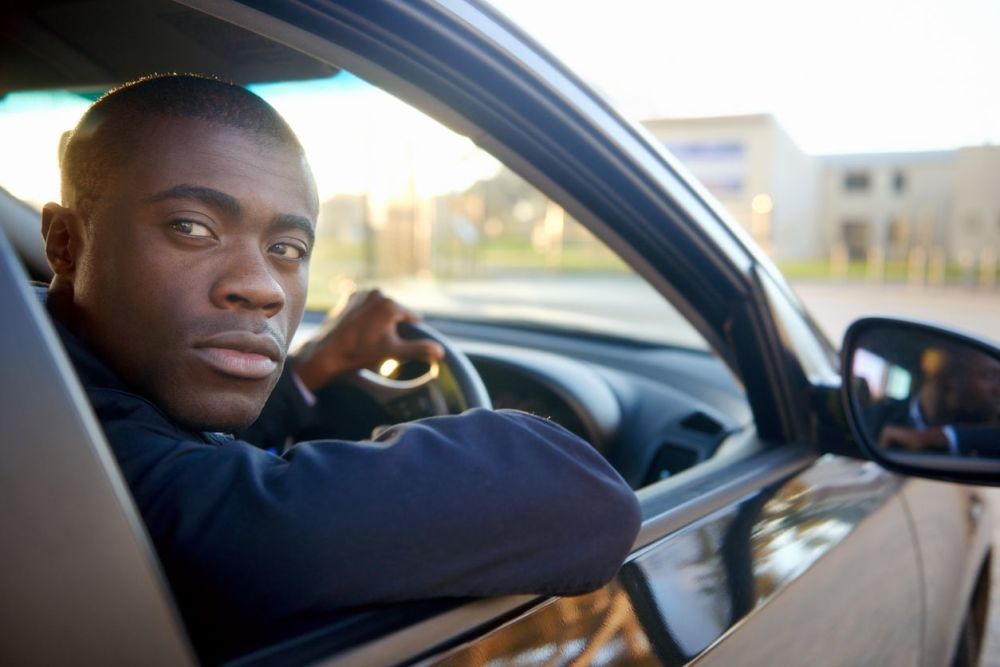
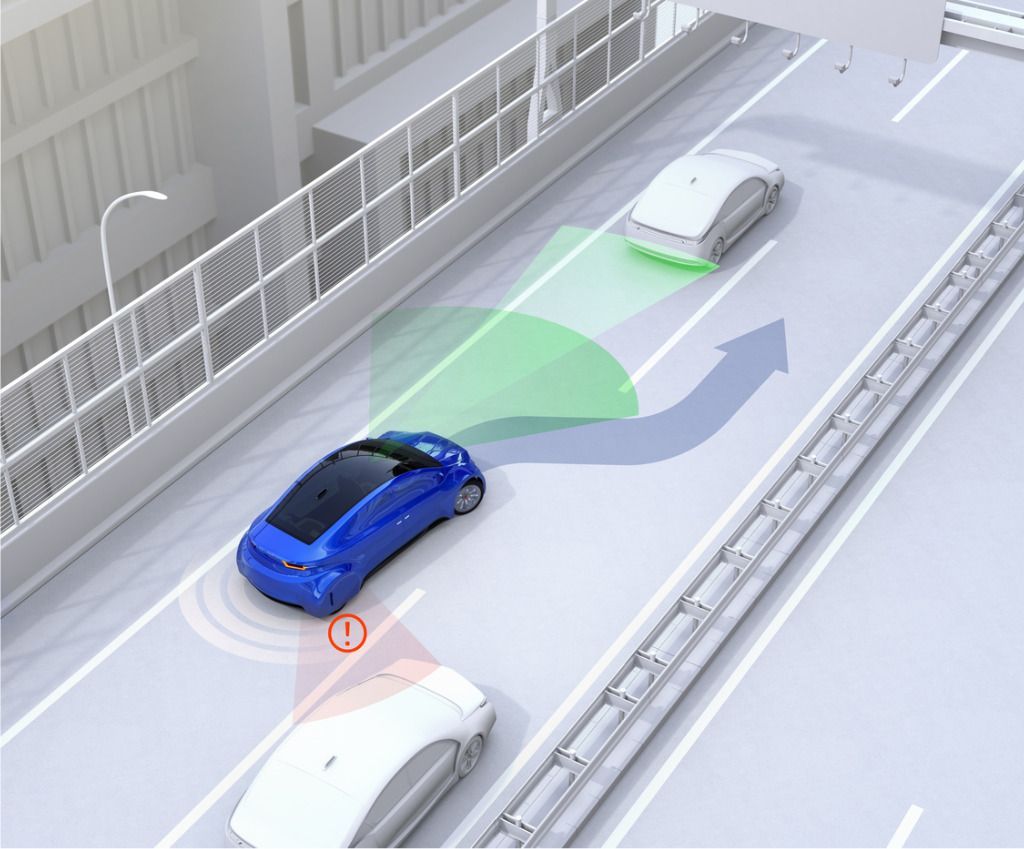
Blind Spot Before.....
Before carrying out any manoeuvre always check your mirrors. This includes:
- moving off - check all mirrors and look over your right shoulder to check the blind spot.
- changing lanes - check all mirrors and either the left or right blind spot depending on your direction.
- overtaking - check your mirrors paying special attention to the offside mirror to make sure no one is about to overtake you.
- turning left or right - check the interior mirror and the nearside mirror when turning left and the offside mirror when turning right.
- Slowing down or stopping - a vehicle following too closely may fail to stop in time when you brake. Check your mirrors in good time so you can lose speed more gently if necessary.
- leaving you car - check your mirrors and blind spot before opening the car door in case a vehicle is passing.
Blindspots On The Move
Where is the Blind spot while driving
Let’s take a look at the 3 cars in the diagram driving along a motorway. Every car has 2 blind spots each side of the car as suggested by the blue shaded areas coming from the red car in the diagram. The blue shading is the area that the driver of the red car cannot see into simply by looking into the mirrors alone.
The orange car can be seen in the red cars right door mirror and perhaps slightly in the interior mirror. The yellow car is completely out of sight from the driver of the red car as it is in his blind spot.
Driving blind spot where the blue shaded area is blind spot area.
If the red car driver wants to change over to the left lane where the yellow car is, he will first need to look into his interior mirror, followed by the left door mirror and then briefly look over his left shoulder to check the left blind spot before changing lanes.
Failure to check this blind spot could clearly cause an accident. The same procedure must be completed if he wished to move to the right hand lane.
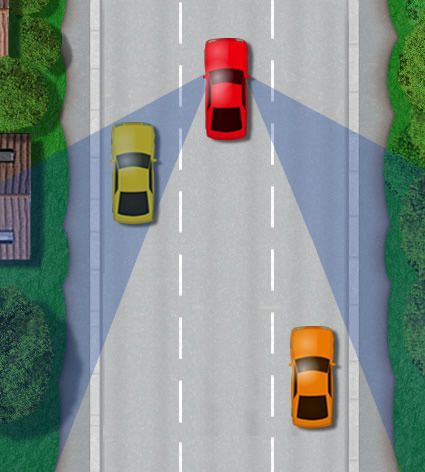
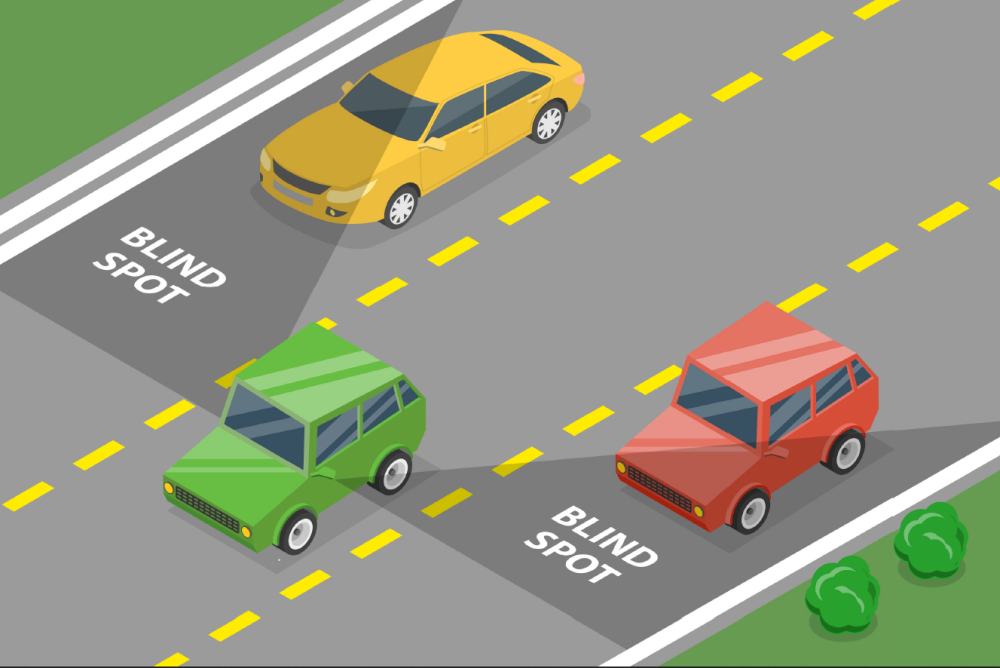
On mototrways and Dual Carriageways
motorways and dual carriageways tend to consist of long stretches of straight road, mirror usage is no less important here.
Firstly, you'll need to use both your interior and exterior mirrors when joining the motorway, as well as whenever you need to change lane.
Additionally, you need to be conscious of the higher speeds present on motorways and dual carriageways, which often carry the national speed limit. This means that what's going on behind you can change in the blink of an eye—and makes regularly checking your mirrors vital.
Motorbikes and Cyclists
Motorcyclists and cyclists require your attention on the road, too, as they may be difficult to spot and can weave in and out of traffic, especially in slower or stationary conditions.
Keep checking your mirrors and blind spots carefully.
You should also make sure that you keep checking your door mirror when overtaking a cyclist to ensure you don't collide with them or cut them off too closely.
Be aware that, as your door mirror is convex, they'll be closer than they appear.
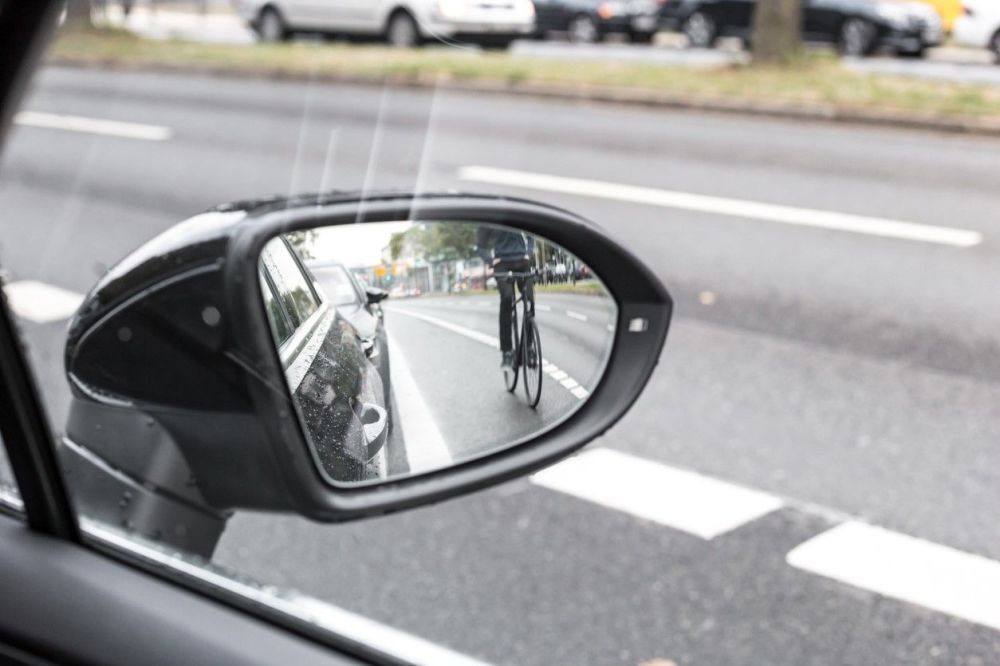
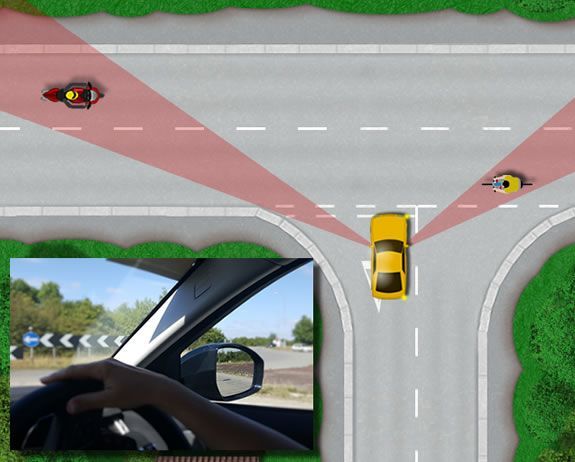
The A-Pillar Blindspot
A-pillars located at the front of the vehicle represent a blind spot area for the driver and the wider the A-pillars, the larger the blind spot.
The illustration shows the yellow car turning right at a T-junction with the red shaded areas representing the blind spot areas caused as a result of the A-pillars.
As seen, a motorcycle and cyclist are easily be hidden within the A-pillar blind spots. A small car can even be concealed within the blind spots. Pulling out of a junction without properly looking can easily result in a collision.
The real issue however is the amount of time drivers take looking before pulling out of a junction. Not taking enough time to ensure it’s clear, combined with hazards such as A-pillar blind spots results in accidents – as statistics prove
Contact Us
Hours
Monday - Friday:
09:00 am - 6:00 pm
Saturday - Sunday:
10:00 am - 3:00 pm